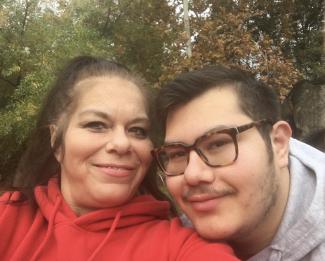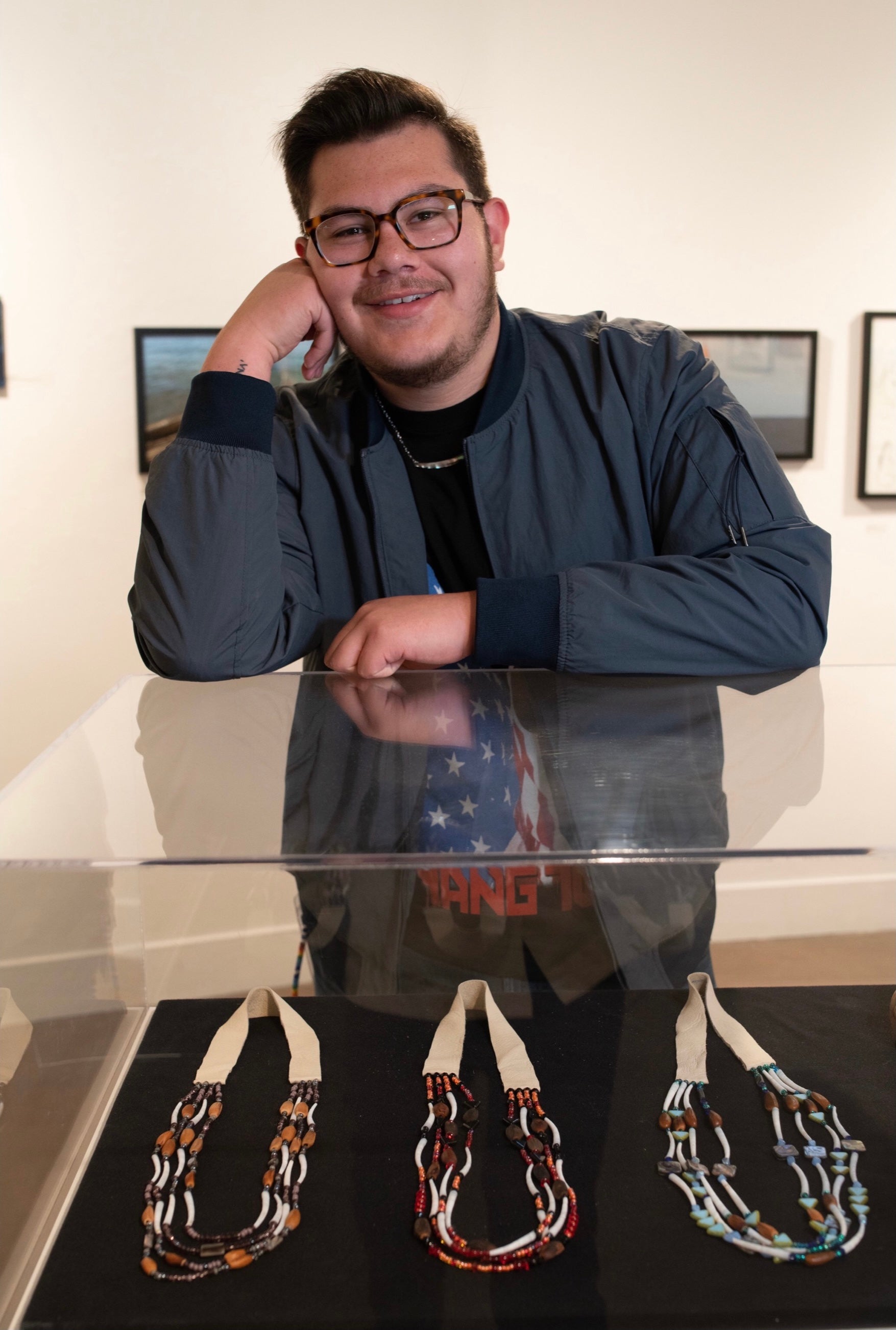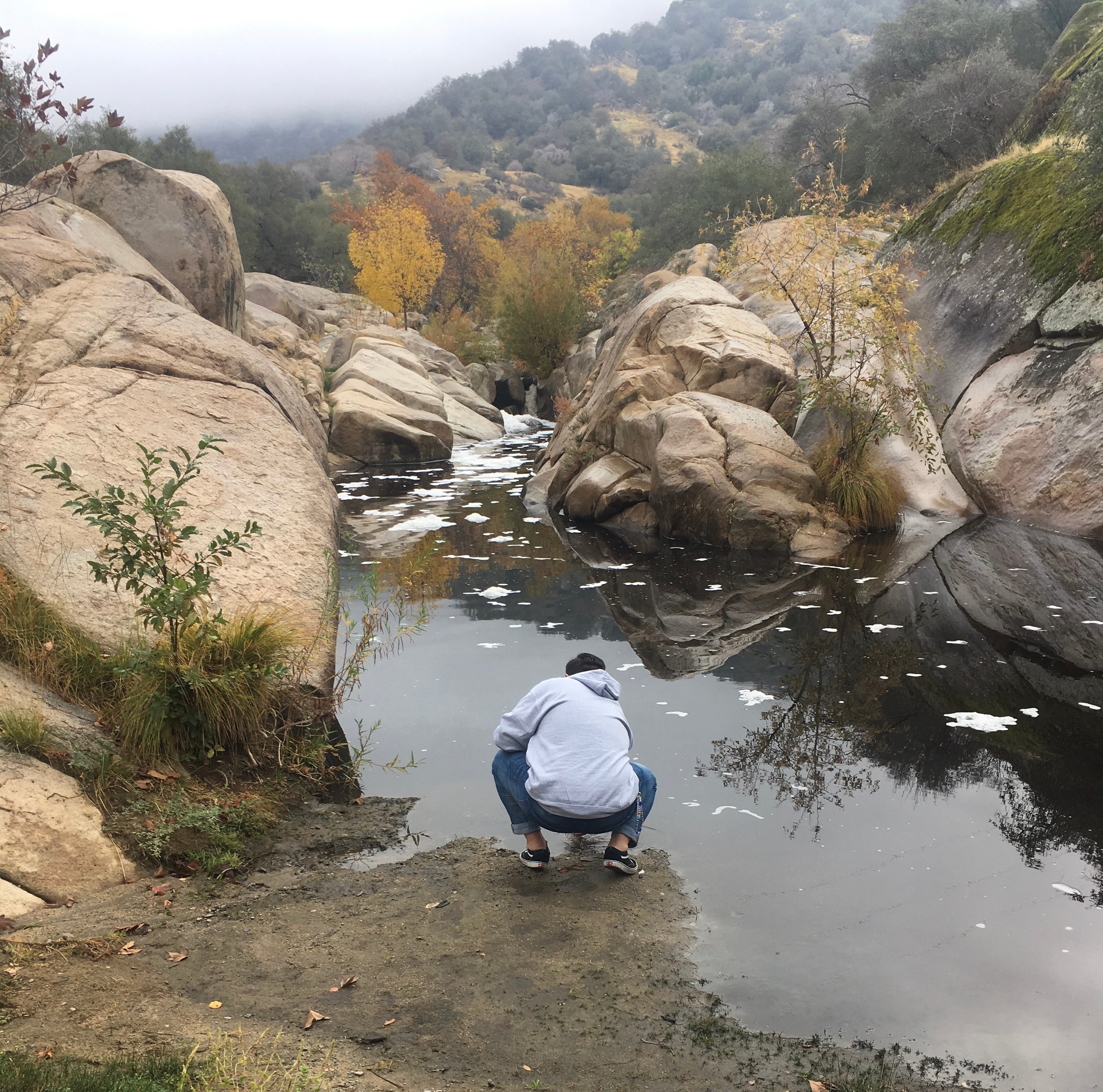
Tsuk wik’a. That’s what my mom used to lovingly tell me when I was being rambunctious as a child. Tsuk wik’a is a Yowlumne phrase meaning be quiet, or shut up. To be fair, I was quite the chatterbox, and honestly, that hasn’t changed much. When my mom first told me tsuk wik’a, I asked her where she learned that phrase, and she told me it was an Indian word that she learned from her dad. He would tell her the same thing as a child. Growing up, it was mentioned within my family that we were Native American, or Indian. I would write these statements off as a kid because I didn’t believe my mom.
I grew up in east Oakland, California, and the only Indians I knew of were the ones in the TV shows and on the decorations in my grandpa’s house. My mom and I most definitely didn’t look like them, so this idea of Indigeneity didn’t seem tangible. My family didn’t explicitly participate in traditional cultural practices, nor seem to feel connected to this supposed Native American ancestry. So, like most kids, I fixated for a bit and moved onto my next obsession. It wasn’t until I was a young teenager that I revisited the concept of Indigeneity.
I am Yokuts through my paternal grandfather. He moved off of the reservation when he was young to be a bull rider in the rodeo. He met my non-Native grandma, had kids, and settled in Los Angeles where he and my grandma could provide for their children. My mom spent a large part of her childhood in Los Angeles away from the reservation. When she was a teenager, my grandparents divorced and my mom and grandpa moved to Porterville, a small valley town just outside of my people’s reservation. She spent her teenage years there spending time off and on the reservation. My mom got married to her first husband at age 18 and moved back to Los Angeles. Nine years and four kids later, she moved to Oakland in the late ‘90s and gave birth to me.

Photo: Quinton Cabellon posing with his necklaces during the opening reception of a museum exhibition where his jewelry is featured.
When I was about 13, I was determined to get to the bottom of this whole “being Indian” thing. I began asking my mom questions and again became fixated. I wanted to know who our people are, where they’re from, and what our culture was. What is a reservation, and why are our people there? Some of these questions my mom could answer and others she could not. I learned that she was raised within aspects of our culture; however, she too was removed from our culture and people for long periods of her life, which led to these gaps. Moreover, like my grandpa, she had to make the choice to stay close to the reservation or seek more opportunities for herself elsewhere. She chose the latter.
My first experience in being immersed in my people’s community came when I was 14. I moved to the Tule River Indian Reservation for the summer. It was an adjustment to say the least, as I moved from the city to the rural foothills of the Sierra Nevada mountains. Country living was hard for a city dweller like me, but it turned out to be one of the most revelatory and enjoyable experiences of my life. I was able to connect with family members that I had never met before and experience the land that my people had been living on since 1873 when the reservation was established by executive order of President Ulysses S. Grant. Up until that summer, the idea of being Native felt like some farfetched family story that I would roll my eyes at. I had no idea that my family and I were connected to a larger community with a thriving culture and land base. Upon my return from that trip, I realized two things: first, I owed my mom an apology for doubting her about us being Indian. Secondly, I am Yokuts and a descendant of the Tule River Indian Tribe.
My hunger for understanding my Indigeneity intensified as I returned back to the Bay Area, though I felt like I was at a standstill. The internet could only take me so far in answering my questions, and I was no longer within my community on the reservation where I could access the answers to the questions I had. Additionally, I faced immense impostor syndrome regarding whether or not I had any right to claim my newly found Indigeneity. I did not grow up on the reservation, nor was I raised and rooted in my culture. Through these feelings I persevered and continued my journey in reconnecting.
One day while at school, a staff member told me about a summer internship for Native youth through The Cultural Conservancy. I didn’t know if I was “Native enough” to qualify, but after a few days I took the leap of faith and applied. That internship became a massive turning point in my journey of self-discovery. I was able to connect with other Native youth who were like me in reconnecting and others who were strongly rooted in their cultures and communities. That internship experience was a safe place for me to meet mentors with whom I could be vulnerable about my hesitations surrounding my identity.

Photo: Taking a moment of reflection with the Tule River at Painted Rock, a special place on the Tule River Indian Reservation.
Moreover, I was exposed to the inter-tribal community of the San Francisco Bay Area. I grew up in Oakland and never knew how many Native people lived in the Bay Area. I had no idea about the history of Ohlone Peoples, who have called the San Francisco Bay Area home since time immemorial, or the government relocation programs that moved large numbers of Native Peoples from across the U.S to urban centers like the Bay. I was able to connect with so many great organizations like the Intertribal Friendship House and American Indian Child Resource Center. These organizations were instrumental in the growth of my connectedness to my heritage, as well as my growth as a person. Through Intertribal Friendship House, I was able to join their Native Youth Council and helped plan an annual youth conference. The staff at American Indian Child Resource Center helped me with my college application process. These organizations helped foster a sense of belonging in the Bay Area Native community. They took me in and met me where I was, and for that I am forever thankful. I stepped away from a deficit mentality and recognized the abundance that is right in front of me.
During my time as a Native American Studies major at the University of California Davis, I would read and write about how resilient Indigenous Peoples are. Against wave after wave of colonial onslaught, Indigenous Peoples were able to remain, resist, and thrive. Reading accounts of how other communities and Peoples persevered and retained their culture forced me to think about what that looked like for my family and I. For the longest time I perpetuated the narrative that my family was so disconnected from our people and our culture. I viewed myself as the product of a family line stripped away from their community adopted and into the broader American culture.
In reality, the thread that connected me to my ancestors was present every time my mom told me to be quiet. I was so quick to identify the things I thought were missing that I missed the traditional values and culture that my mom instilled in me that were right in front of me. Values of reciprocity, kinship, intuition all held nuanced cultural meanings that I never realized. Interlaced throughout my childhood were these pieces of resilient knowledge showcasing that connections may get lost, but are never truly gone. These connections, when realized, lead us back to that sacred place of connection to our relatives, community, and ancestors.
— Quinton Cabellon (Tule River Yokuts) is an artist and community educator from east Oakland, California. He holds a B.A. in Native American Studies from the University of California Davis. He currently works for an adult literacy and education nonprofit organization in Oakland.
Top photo: Quinton Cabellon and his mom sharing a moment during a visit to the Tule River Indian Reservation, California. All photos courtesy of Quinton Cabellon.
